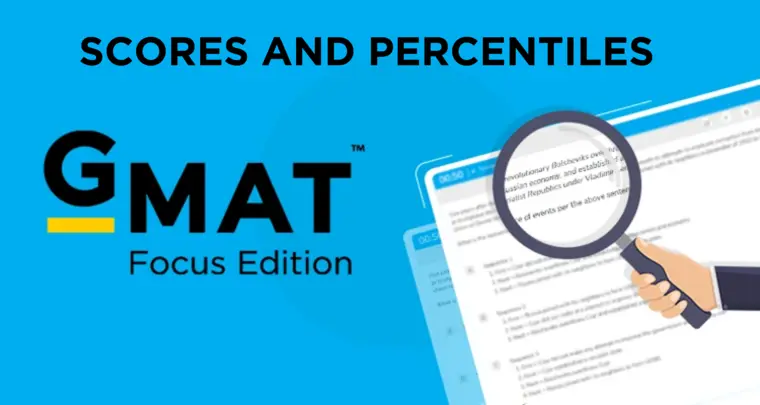Environmental organizations want to preserve the land surrounding the Wilgrinn Wilderness Area from residential development. They plan to do this by purchasing that land from the farmers who own it. That plan is ill-conceived: if the farmers did sell their land, they would sell it to the highest bidder, and developers would outbid any other bidders. On the other hand, these farmers will never actually sell any of the land, provided that farming it remains viable. But farming will not remain viable if the farms are left unmodernized, and most of the farmers lack the financial resources modernization requires. And that is exactly why a more sensible preservation strategy would be to assist the farmers to modernize their farms to the extent needed to maintain viability.
In the reasoning above, the two boldface portions play which of the following roles?
(A.) The first assesses the goal held by certain environmental organizations; the second presents the goal that the reasoning concludes should be adopted instead.
(B.) The first assesses the goal held by certain environmental organizations; the second presents the strategy that the reasoning concludes has the best chance of reaching that goal.
(C.) The first is the conclusion reached about one strategy for attaining a certain goal; the second presents the strategy that the reasoning advocates.
(D.) The first is the main conclusion toward which the reasoning is directed; the second presents a strategy that is called sensible but for which no support is offered.
(E.) The first is the main conclusion toward which the reasoning is directed; the second is a consideration raised in order to support that conclusion.
Solution
Passage Analysis
Environmental organizations want to preserve the land surrounding the Wilgrinn Wilderness Area from residential development.
This statement tells us what environment organizations want to do. Their goal is to protect the land surrounding the Wilgrinn Wilderness Area from residential development.
They plan to do this by purchasing that land from the farmers who own it.
This statement gives us the environmental organizations’ plan to reach their goal. They plan to purchase the land surrounding the Wilgrinn area from the farmers who own it.
That plan is ill-conceived: if the farmers did sell their land, they would sell it to the highest bidder, and developers would outbid any other bidders.
The first part of this statement gives us the author’s conclusion about the plan. The author believes that the environmental organizations’ plan will not work. The reason for this is that farmers would sell their land to the highest bidder, and developers would bid higher than anyone else. So, if the farmers did sell the land, it would likely go to the developers.
On the other hand, these farmers will never actually sell any of the land, provided that farming it remains viable.
In this statement, the author says that as long as farming on the land remains possible, farmers will never actually sell the land. This provides further support for the author’s opinion that the plan to buy the land is ill-conceived.
But farming will not remain viable if the farms are left unmodernized, and most of the farmers lack the financial resources modernization requires.
This statement starts by presenting a scenario in which farming on the land will not remain viable. If farms are not modernized, farming will not remain viable. Since most of the farmers don’t have the money to modernize their farms, most of the farms are likely to be left unmodernized, leading to farming no longer being viable. In such a scenario, farming would not be viable and the farmers would be likely to make the decision to sell the land. If they do, they will be likely to sell it to the highest bidders, the developers. So, the environmental organizations’ goal to preserve the land will probably not be achieved if the farms are left unmodernized.
And that is exactly why a more sensible preservation strategy would be to assist the farmers to modernize their farms to the extent needed to maintain viability.
For the reasons stated, the author says that a more sensible preservation strategy would be to assist the farmers to modernize the farms to the extent that farming can continue to be viable. In this case, farming would remain viable and there would be no need to try to purchase the land in order to preserve it from residential development.
Pre-thinking
As discussed in the passage analysis, BF1 gives the author’s opinion about the environmentalists’ plan. The author thinks that the plan to buy the land is ill-conceived.
The second part in boldface gives an alternative strategy to the one planned by the environmentalists. The author says that assisting farmers to modernize their farms would be more sensible than attempting to buy the land.
Analysis of Option Statements
(A.) The first assesses the goal held by certain environmental organizations; the second presents the goal that the reasoning concludes should be adopted instead.
The first part of this answer choice is incorrect because BF1 is an assessment of the environmentalists’ plan, and not of their goal. The environmentalists’ goal is to preserve the land, and their plan is to achieve the goal by purchasing the land. The author assesses the plan by suggesting a more sensible strategy.
The second part of this option says that BF2 presents the goal that the author says should be adopted instead. This part is also incorrect, since the author is presenting an alternative plan in BF2, not an alternative goal. The goal has not changed: it is still to preserve the land from residential development.
(B.) The first assesses the goal held by certain environmental organizations; the second presents the strategy that the reasoning concludes has the best chance of reaching that goal.
The first part of this option is the same as that for option A, and is incorrect for the same reasons.
The second part of this statement says that the strategy presented by the author is the “best chance” of reaching the goal. The author presents this strategy as “more sensible” than the plan to purchase the land, but does not say that it is the “best” strategy to achieve the goal. There could be better strategies that are not discussed by the author.
(C.) The first is the conclusion reached about one strategy for attaining a certain goal; the second presents the strategy that the reasoning advocates.
The first part of this option says that BF1 is the author’s conclusion about one strategy for attaining a certain goal. This part is correct since BF1 is the author’s view of the plan to preserve the land by purchasing it.
The second part of this option says that BF2 presents the strategy advocated by the reasoning. This part is also correct since BF2 is the alternative plan to preserve the land that is presented by the author as a better strategy than the one planned by the environmentalists.
So, this is the correct answer.
(D.) The first is the main conclusion toward which the reasoning is directed; the second presents a strategy that is called sensible but for which no support is offered.
The first part of this option states that BF1 is the main conclusion. This is not the author’s main conclusion, but an intermediate one. The author says that the environmentalists’ plan is ill-conceived, and goes on to present a better plan. So, the last sentence as a whole is the author’s main conclusion.
Let’s test this using the ABC test. Is the author saying ‘A because B’ or ‘B because A’?
Here, A = the first strategy is ill-conceived and B = assisting the farmers to modernize their farms is a more sensible preservation strategy.
So, which of the following makes more sense?
- The first strategy is ill-conceived because assisting the farmers to modernize their farms is a more sensible strategy
- Assisting the farmers to modernize their farmers is a more sensible strategy because the strategy to buy the farms is ill-conceived
Clearly, option 2 makes more logical sense. It is only if the first plan is dismissed as being unlikely to succeed that the second can be proposed as a more sensible plan. So, the BF1 is the intermediate conclusion and BF2 is part of the main conclusion.
The second part of this option is also incorrect. It says that BF2 presents a strategy for which no support is offered. The author provides the support for the strategy in the previous statement, which says that farms should be modernized if farming is to remain viable.
(E.) The first is the main conclusion toward which the reasoning is directed; the second is a consideration raised in order to support that conclusion.
The first part of this option is incorrect for the same reason that the first part of the previous option is incorrect.
The second part of this option is also incorrect. BF2 does not support BF1, but is presented as a strategy that is better than the one dismissed in BF1. So, this choice is also incorrect.
-Solution created by Meghna Mudaliar.














